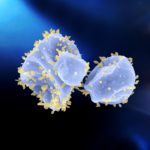Link to Pubmed [PMID] – 26104461
Microbiol Spectr 2014 Dec;2(6)
Many plasmids have been described in Euryarchaeota, one of the three major archaeal phyla, most of them in salt-loving haloarchaea and hyperthermophilic Thermococcales. These plasmids resemble bacterial plasmids in terms of size (from small plasmids encoding only one gene up to large megaplasmids) and replication mechanisms (rolling circle or theta). Some of them are related to viral genomes and form a more or less continuous sequence space including many integrated elements. Plasmids from Euryarchaeota have been useful for designing efficient genetic tools for these microorganisms. In addition, they have also been used to probe the topological state of plasmids in species with or without DNA gyrase and/or reverse gyrase. Plasmids from Euryarchaeota encode both DNA replication proteins recruited from their hosts and novel families of DNA replication proteins. Euryarchaeota form an interesting playground to test evolutionary hypotheses on the origin and evolution of viruses and plasmids, since a robust phylogeny is available for this phylum. Preliminary studies have shown that for different plasmid families, plasmids share a common gene pool and coevolve with their hosts. They are involved in gene transfer, mostly between plasmids and viruses present in closely related species, but rarely between cells from distantly related archaeal lineages. With few exceptions (e.g., plasmids carrying gas vesicle genes), most archaeal plasmids seem to be cryptic. Interestingly, plasmids and viral genomes have been detected in extracellular membrane vesicles produced by Thermococcales, suggesting that these vesicles could be involved in the transfer of viruses and plasmids between cells.



